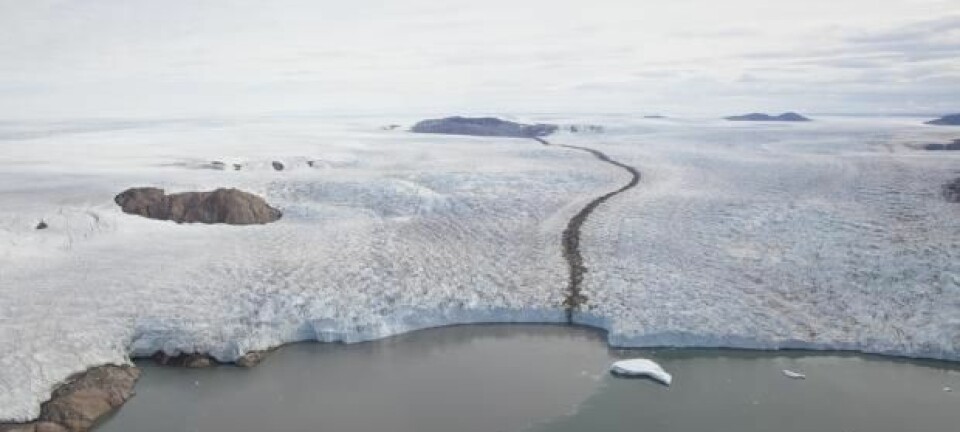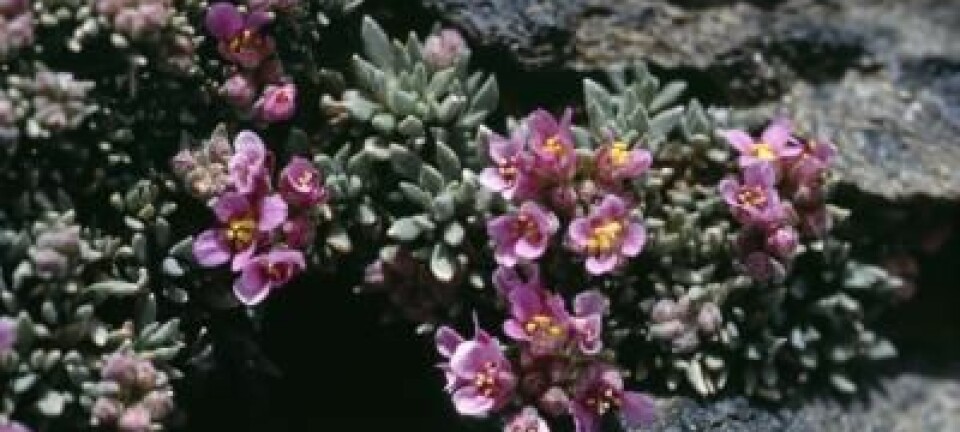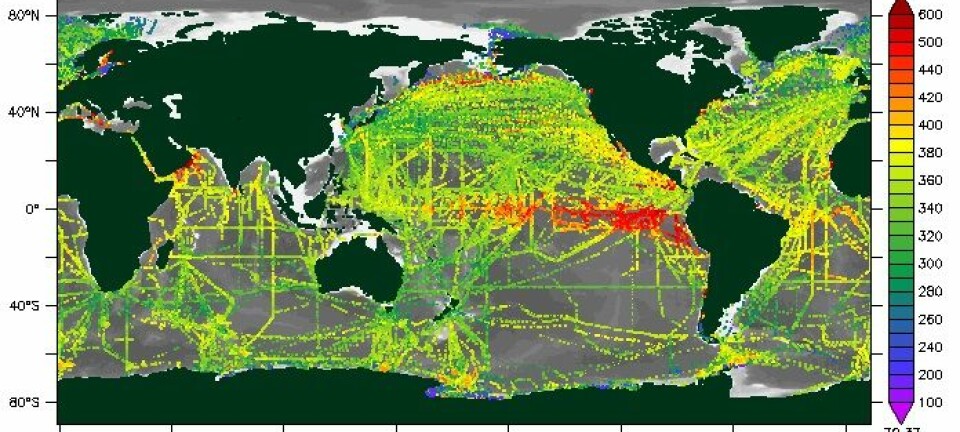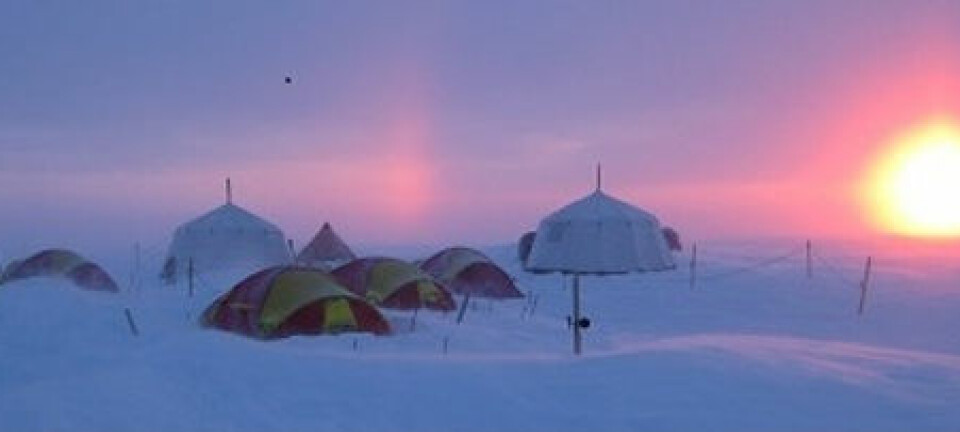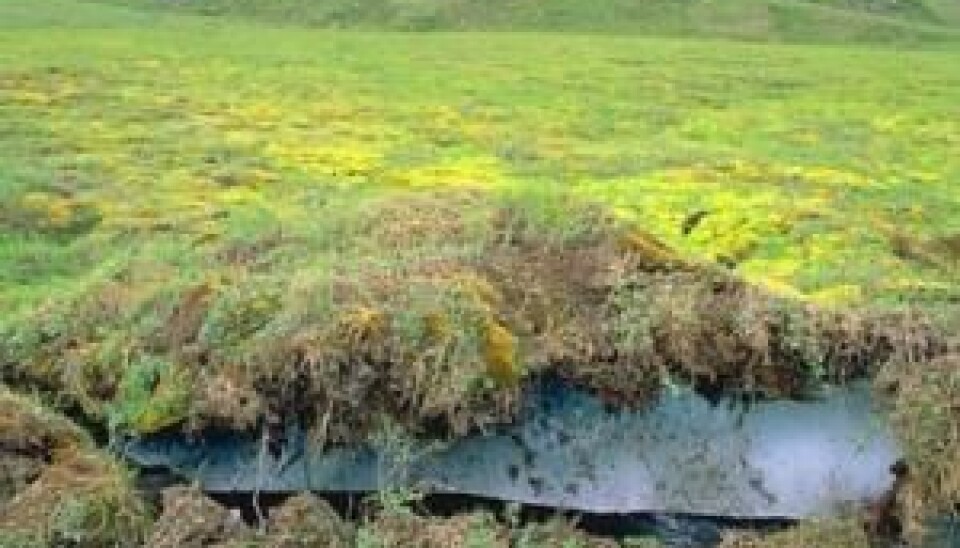
Thawing permafrost emits more carbon than expected
Thawed Arctic permafrost emits more greenhouse gases to the atmosphere than scientists have thought. This can have frightening consequences, warns a researcher.
Arctic permafrost – earth strata that have been frozen for thousands of years – is now thawing as a result of global warming.
This starts a geological process that releases considerably larger amounts of greenhouse gases to the atmosphere than scientists have thought. Greenhouse gas emissions from one of the largest permafrost areas in the world are ten times higher than expected.
This is the conclusion of a new international study with Danish participation, published in the scientific journal Nature.
“We’ve known for a long time that thawed permafrost in Arctic regions is a source of greenhouse gases in the atmosphere, but we were unsure of the size of the emissions – now we have a figure that is surprisingly high,” says Per Roos, a senior researcher at DTU Risø, the National Laboratory for Sustainable Energy under the Technical University of Denmark (DTU), who took part in the study.
It’s frightening to think about the consequences of this for the continued development of nature in the region. There’s a very large amount of carbon stored in the permafrost, and the warmer the Earth gets, the greater the amount of carbon that will be released and ends up as carbon dioxide in the atmosphere.
Per Roos
“It’s frightening to think about the consequences of this for the continued development of nature in the region,” he adds. “There’s a very large amount of carbon stored in the permafrost, and the warmer the Earth gets, the greater the amount of carbon that will be released and ends up as carbon dioxide in the atmosphere.”
Coastal Arctic permafrost thaws
Permafrost is found in many locations around the world, but it is a characteristic part of a 7,000-km long coastline along the east Siberian Arctic shelf. Here, layers of soil from one to 30 metres deep have been permanently frozen – with temperatures below 0 degrees Celcius – for hundreds of thousands of years.
This permafrost works as a buttress, shoring up the coastline. But as soon as the soil thaws, the permafrost loses its buttressing power, and the layers of soil erode or collapse, sending rocks, stones, soil and gravel into the ocean.
These materials contain tons and tons of ancient carbon, which was stored intact by the frozen layers of the permafrost. As it’s released from this material, considerable amounts of the carbon form a sedimentary deposit on the seabed, while the rest is mixed with the ocean water and reacts with oxygen to form carbon dioxide.
The increased amount of greenhouse gas in the atmosphere will accelerate global warming, which will lead to further thawing of the permafrost. If this development continues, the contribution of greenhouse gases from the permafrost has the potential to be really big.
Per Roos
Sooner or later the water will be saturated with this greenhouse gas, which then starts to bubble to the water’s surface and from there rise up into the atmosphere.
In this way, the ancient, previously stored carbon adds to global warming.
“This is a well-known process, and the question for scientists has been how much greenhouse gas it really generates,” says the researcher. “Until now, the answer to this question has been the subject of guesswork – but our study enables us to make a far more qualified estimate based on the samples we have taken and advanced analyses.”
Samples taken from very difficult terrain
Although the 7,000-km long stretch of east Siberian Arctic coastline is home to a considerable part of the Earth’s permafrost, it isn’t until now that scientists have studied the extent to which the permafrost actually thaws in the area and the consequences of this for the climate.
The area has simply been too harsh and remote for scientific studies that need to drill for samples from strata many metres deep in the soil and under water.
Roos and his colleagues were thus pioneers in this area when they decided a couple of years ago to carry out the study and drill for core samples in the permafrost.
Development can escalate
Based on the permafrost’s content of the carbon isotopes 13 and 14, as well as other factors, the scientists have been able to determine the origin of the carbon in the permafrost. They have also been able to calculate how much of the carbon that forms sedimentary layers on the seabed comes from thawed permafrost along the coastline.
In addition, the scientists have figured out the speed at which the soil strata along the coast have fallen into the ocean.
“We’ve been able to calculate how much carbon washes into the ocean because the permafrost along the coast thaws and the soil containing carbon erodes,” says Roos. “We’re talking about 44 million tons a year from this stretch alone.”
This is about the same amount of carbon that is stored in all living trees in the area.
“This is significantly more greenhouse gas than we expected would come from this source and this can have far-reaching consequences in the future,” says the scientist. “The increased amount of greenhouse gas in the atmosphere will accelerate global warming, which will lead to further thawing of the permafrost. If this development continues, the contribution of greenhouse gases from the permafrost has the potential to be really big.”
The scientists have yet to calculate the total contribution from all permafrost areas. This will be a task for future studies, says Roos.
------------------------------------
Read the Danish version of this article at videnskab.dk
Translated by: Michael de Laine
